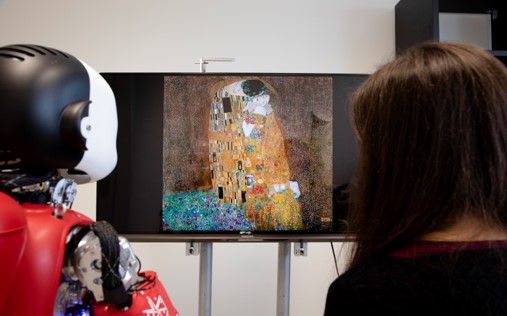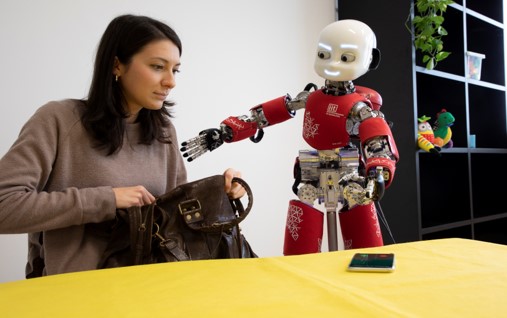Understanding Human Cognition
The aim of our research is understanding the sensory, motor and cognitive bases of human ability to interact with others and with the world. In this endeavor, the robot becomes an ideal, controllable probe to understand and model the human and to investigate the mechanisms supporting human interaction. As a result, we contribute to a more profound comprehension of human social cognition through a constructive, embodied, model-based approach.
For example, interacting with others requires the ability to evaluate their attitudes based on how actions are performed. For an intuitive and transparent human-robot interaction it is important to endow the robot with the capacity to communicate intuitively different attitudes in its own actions.

Cognitive Architectures and Learning

Humans, as social beings, are naturally prone to adapt to others, changing their actions, tones, and behavior in relation to the perceived needs of the interacting partners. This ability requires integrating perceptual and behavioral abilities into cognitive architectures to support social awareness and adaptation. One of the main goals of our research is to capture the essence of such cognitive architecture porting it to robots, to support very simple forms of social adaptability and autonomous learning.
To achieve these faculties, it is necessary to understand what processes are essentials for intelligence to autonomously develop and dynamically evolve with experience, by relying on several core cognitive abilities, such as sensorimotor skills, reasoning, anticipation, memory, motivation, etc.
Cognition is essential for effective interaction with humans, as it allows a robot to infer the goals and intentions of the interacting person, enabling helpful and cooperative behavior, collaboration when achieving common goals, and more engaged and pleasant interactions.
Humane Robots
Reading Implicit Cues & Communicating Through MotionHumans base most of their collaborative behavior on unsaid, covert information. The reading of implicit signals embedded in human actions enables the partners to read the mind and the emotions of the other and plays a crucial role in our social decisions.
We work to provide robots with the ability to capture the essence of what the other person really intends or wants, to predict the consequences of their actions and behaviors, and to tailor their response accordingly, by following a series of unscripted social rules.
The key to achieve this is to start making robot more humane. A humane robot is a robot considerate of humans, i.e. that maintains a model of humans in order to understand and predict their needs, intentions and limitations, while being transparent, legible and predictable in its own behaviors. The ultimate robot may not be anthropomorphic, but it needs to have at least an anthropomorphic mind to support human understanding and prediction.
